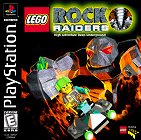
 The Game: The Rock Raiders are zipping through space, looking for another planet to explore, when a gigantic wormhole opens up and whisks them into the next galaxy. Before you can say “Mister Paris, engage!,” Chief and his crew are already scouting out new worlds to mine. One planet seems like a particularly promising candidate, but sensors detect other life forms there. Your job is to help various members of the Rock Raiders crew perform mining, exploration and rescue tasks on the surface of this strange new world as safely as possible. (Lego Media, 2000)
The Game: The Rock Raiders are zipping through space, looking for another planet to explore, when a gigantic wormhole opens up and whisks them into the next galaxy. Before you can say “Mister Paris, engage!,” Chief and his crew are already scouting out new worlds to mine. One planet seems like a particularly promising candidate, but sensors detect other life forms there. Your job is to help various members of the Rock Raiders crew perform mining, exploration and rescue tasks on the surface of this strange new world as safely as possible. (Lego Media, 2000)
Memories: This may be just about the coolest game I’ve seen on the Playstation since MTV Music Generator. Now, you’re probably already laughing it up, wondering why in the world someone who’s pushing 30 is playing a game where the protagonists are well-rendered little Lego men (yep, just like the ones that come with the toys). But believe it or not, despite the exceedingly simple early tutorial missions that kick things off, this is actually quite the crafty little real-time strategy game.

 The Game: You control the speed and direction of a marble which is racing other marbles to reach the finish line. Obstacles along the way include marble-eating creatures, treacherous cliffs and drawbridges, and the game’s own unreliable controls! (Midway, 2000)
The Game: You control the speed and direction of a marble which is racing other marbles to reach the finish line. Obstacles along the way include marble-eating creatures, treacherous cliffs and drawbridges, and the game’s own unreliable controls! (Midway, 2000)


 The Game: A boy named Speedy ventures through a mystical land, taunted by cute animals. Somehow this quest is expressed through a series of challenges in which the player tries to claim as much of the playing field as possible by enclosing areas of it. If the ever-shifting Qix touches Speedy’s marker or an uncompleted boundary, a life is lost and the boundary must be built again. Sparx, which travel only along the edges of the playing field and along the boundaries of already-enclosed areas of the screen, can also cost Speedy a life. (Taito, 2000)
The Game: A boy named Speedy ventures through a mystical land, taunted by cute animals. Somehow this quest is expressed through a series of challenges in which the player tries to claim as much of the playing field as possible by enclosing areas of it. If the ever-shifting Qix touches Speedy’s marker or an uncompleted boundary, a life is lost and the boundary must be built again. Sparx, which travel only along the edges of the playing field and along the boundaries of already-enclosed areas of the screen, can also cost Speedy a life. (Taito, 2000) The Game: In the year 2199, Earth is beseiged by radioactive planet bombs launched by the Gamilons. When two junior officers happen upon alien wreckage on Mars, including a message intended for Earth with details of new propulsion and weapon systems, and the promise of a device which could restore Earth to its former beauty, the wheel is set in motion for mankind’s final desperate gambit for survival. The WWII battleship Yamato is repaired and made spaceworthy with the new technology, and Captain Okita hand-picks a dedicated young crew to fly the ship to the planet Iscandar – the source of the message – and back. That’s where you step in for Okita – using a rotating ring of character heads, you can give characters such as Susumu Kodai, Yuki Mori and Daisuke Shima their orders, get their advice, and engage in combat with the Gamilons in space and on the surfaces of various planets. (Bandai, 2000)
The Game: In the year 2199, Earth is beseiged by radioactive planet bombs launched by the Gamilons. When two junior officers happen upon alien wreckage on Mars, including a message intended for Earth with details of new propulsion and weapon systems, and the promise of a device which could restore Earth to its former beauty, the wheel is set in motion for mankind’s final desperate gambit for survival. The WWII battleship Yamato is repaired and made spaceworthy with the new technology, and Captain Okita hand-picks a dedicated young crew to fly the ship to the planet Iscandar – the source of the message – and back. That’s where you step in for Okita – using a rotating ring of character heads, you can give characters such as Susumu Kodai, Yuki Mori and Daisuke Shima their orders, get their advice, and engage in combat with the Gamilons in space and on the surfaces of various planets. (Bandai, 2000)
 Memories: The second entry in LucasArts’ effort to mine Star Wars: Episode I for new Playstation games is a vast improvement over the previous, generically titled Phantom Menace game. And, at long last, Jedi Power Battles offers something that has been missing from the Star Wars video gaming genre for a long time: a chance to fight some battles with the lightsaber as your chief weapon.
Memories: The second entry in LucasArts’ effort to mine Star Wars: Episode I for new Playstation games is a vast improvement over the previous, generically titled Phantom Menace game. And, at long last, Jedi Power Battles offers something that has been missing from the Star Wars video gaming genre for a long time: a chance to fight some battles with the lightsaber as your chief weapon. 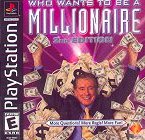

 The Game: You’re the pilot of a ground-based mobile weapons platform, and there are buttloads of alien meanies headed right for you. Your only defense is a trio of shields which are degraded by any weapons fire – yours or theirs – and a quick trigger finger. Occasionally a mothership zips across the top of the screen. When the screen is cleared of invaders, another wave – faster and more aggressive – appears. When you’re out of “lives,” or when the aliens manage to land on Earth… it’s all over. This edition adds two new modes, a timed game with a slightly updated retro look, and a 3-D mode which puts the player right behind the cannon, now expanded to a giant 3-D representation. (D3 Publisher [under license from Taito], 2001)
The Game: You’re the pilot of a ground-based mobile weapons platform, and there are buttloads of alien meanies headed right for you. Your only defense is a trio of shields which are degraded by any weapons fire – yours or theirs – and a quick trigger finger. Occasionally a mothership zips across the top of the screen. When the screen is cleared of invaders, another wave – faster and more aggressive – appears. When you’re out of “lives,” or when the aliens manage to land on Earth… it’s all over. This edition adds two new modes, a timed game with a slightly updated retro look, and a 3-D mode which puts the player right behind the cannon, now expanded to a giant 3-D representation. (D3 Publisher [under license from Taito], 2001) The Game: It’s a big day at the races, with a field of drivers selected from the Mushroom Kingdom: Mario, Luigi, Princess Peach, Toad, Bowser, and even Donkey Kong Jr. are among the racers vying for the top spot. From the grassy Mushroom course to the punishingly muddy Star course to the oceanside Flower course, there are challenges, hairpin turns and obstacles. Whoever can learn to navigate each course the fastest without ending up out of bounds struggling to get back on the course will be the winner. (Nintendo, 2001)
The Game: It’s a big day at the races, with a field of drivers selected from the Mushroom Kingdom: Mario, Luigi, Princess Peach, Toad, Bowser, and even Donkey Kong Jr. are among the racers vying for the top spot. From the grassy Mushroom course to the punishingly muddy Star course to the oceanside Flower course, there are challenges, hairpin turns and obstacles. Whoever can learn to navigate each course the fastest without ending up out of bounds struggling to get back on the course will be the winner. (Nintendo, 2001)




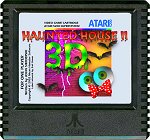 The Game: As with the original Atari 2600 game, you’re exploring a dark haunted house populated by ghosts, spiders, and even a few walking skeletons. Your task is to track down all the treasures hidden in the maze-like rooms of the house without allowing any of these creatures to touch you. If they get hold of you three times, game over. And if you find all the treasure before that happens? Well…you’ll just have to find out. (Mean Hamster Software, 2002; written by John Swiderski)
The Game: As with the original Atari 2600 game, you’re exploring a dark haunted house populated by ghosts, spiders, and even a few walking skeletons. Your task is to track down all the treasures hidden in the maze-like rooms of the house without allowing any of these creatures to touch you. If they get hold of you three times, game over. And if you find all the treasure before that happens? Well…you’ll just have to find out. (Mean Hamster Software, 2002; written by John Swiderski)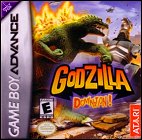
 The Game: Darkness has fallen anew upon Sosaria, and Lord British calls for your service again. You set out with four adventurers on a quest to gain the experience that will be necessary to survive the long voyage to a volcanic island where the source of all the evil plaguing the world is said to be. (Sven Carlberg, 2002)
The Game: Darkness has fallen anew upon Sosaria, and Lord British calls for your service again. You set out with four adventurers on a quest to gain the experience that will be necessary to survive the long voyage to a volcanic island where the source of all the evil plaguing the world is said to be. (Sven Carlberg, 2002)
 The Game: Remember those BASIC programming how-to books in the 70s and 80s with the do-it-yourself minigames you could type in and run? They’re back. Daniel Bienvenu’s tribute to those classic games has a twist though: it’s running
The Game: Remember those BASIC programming how-to books in the 70s and 80s with the do-it-yourself minigames you could type in and run? They’re back. Daniel Bienvenu’s tribute to those classic games has a twist though: it’s running  The Game: 25 choice cuts of Intellivision goodness are crammed into something about the size of a modern-day console controller. Games include Astrosmash, Body Slam Super Pro Wrestling, Buzz Bombers, Chip Shot Super Pro
The Game: 25 choice cuts of Intellivision goodness are crammed into something about the size of a modern-day console controller. Games include Astrosmash, Body Slam Super Pro Wrestling, Buzz Bombers, Chip Shot Super Pro 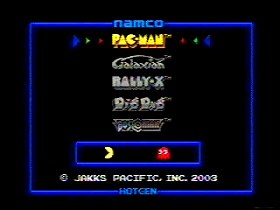
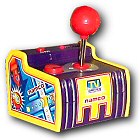 Memories: After I reviewed the dandy Techno Source Intellivision 25-in-1 TV Game, at least one e-mail suggested that I wasn’t being critical enough in my review. I praised that dandy self-contained gadget for capturing the flavor of those 25 classic Intellivision games, even if a lot of the finer details were left out. Those of you who thought I was going easy on that game should just stop reading this review now. Because I kinda dig this quintet of Namco goodness – with some significant reservations.
Memories: After I reviewed the dandy Techno Source Intellivision 25-in-1 TV Game, at least one e-mail suggested that I wasn’t being critical enough in my review. I praised that dandy self-contained gadget for capturing the flavor of those 25 classic Intellivision games, even if a lot of the finer details were left out. Those of you who thought I was going easy on that game should just stop reading this review now. Because I kinda dig this quintet of Namco goodness – with some significant reservations. 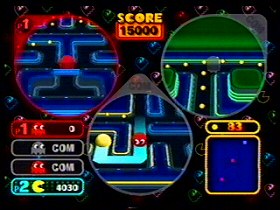 The Game: As a round yellow creature consisting of a mouth and nothing else, one player maneuvers around a relatively simple maze, gobbling small dots and evading four colorful monsters, up to three of which are controlled by his fellow players, who can eat Pac-Man on contact. In four corners of the screen, large flashing dots enable Pac-Man to turn the tables and eat the monsters for a brief period of time. Periodically, assorted items appear near the center of the maze, and Pac-Man can consume these for additional points as well. The monsters, once eaten, return to their home base in ghost form and return to the chase. If cleared of dots, the maze refills and the game starts again, but just a little bit faster. The game continues until a preset target score is reached, or until Pac-Man is caught by one of the monsters; the player controlling that monster is then handed the Game Boy Advance to take over Pac-Man’s role. (Namco, 2003 – for Nintendo Gamecube)
The Game: As a round yellow creature consisting of a mouth and nothing else, one player maneuvers around a relatively simple maze, gobbling small dots and evading four colorful monsters, up to three of which are controlled by his fellow players, who can eat Pac-Man on contact. In four corners of the screen, large flashing dots enable Pac-Man to turn the tables and eat the monsters for a brief period of time. Periodically, assorted items appear near the center of the maze, and Pac-Man can consume these for additional points as well. The monsters, once eaten, return to their home base in ghost form and return to the chase. If cleared of dots, the maze refills and the game starts again, but just a little bit faster. The game continues until a preset target score is reached, or until Pac-Man is caught by one of the monsters; the player controlling that monster is then handed the Game Boy Advance to take over Pac-Man’s role. (Namco, 2003 – for Nintendo Gamecube)